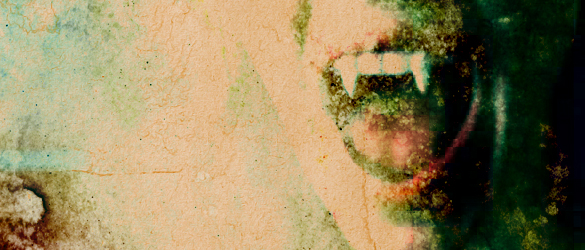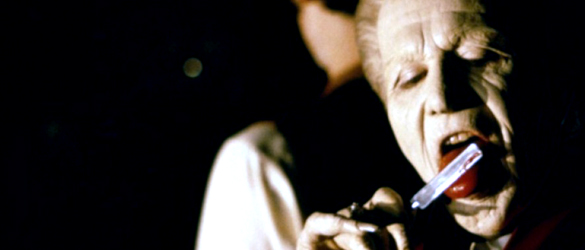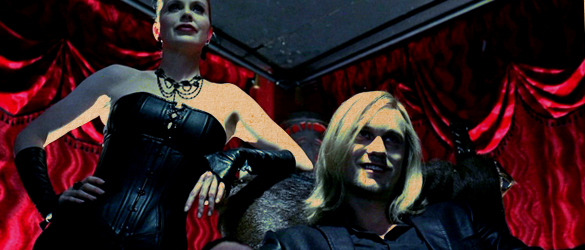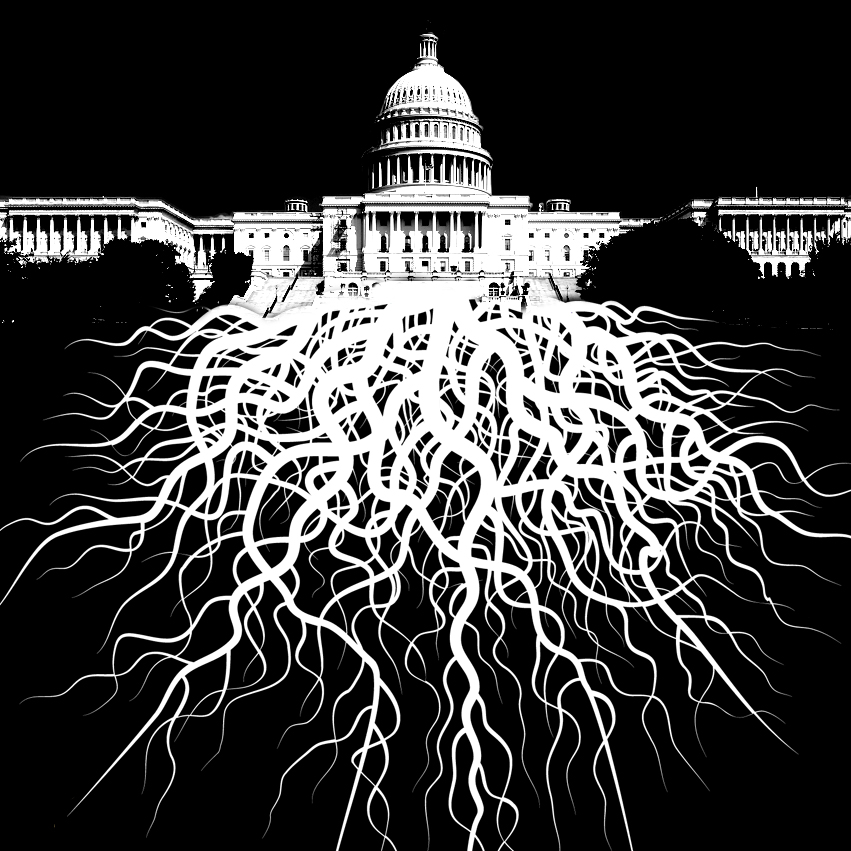“The strength of the vampire is that people will not believe in him.”—Dr. Abraham Van Helsing
Halloween is associated with many strange creatures, but none more so than the vampire. To most people, the vampire is nothing more than a mythic monster popularized in movies, television, books and so on. Yet the vampire, an amalgamation of ancient lore woven through with sex, fear, danger and gore, is no mere Hollywood creation.
Indeed, stories about this bloodsucking fiend have been told throughout the world for centuries, perhaps as long as tales have been told. The villagers of Uganda, Haiti, Indonesia and the Upper Amazon all have their local variety of vampire. The Native American tribes, Arctic Eskimos and many Arabian tribes also know the vampire well. Even at the dawn of the scientific age, scholars and members of the clergy were convinced of the vampire’s existence. This was no doubt due to the numerous publicized instances of vampirism.
Accounts of vampires have been chronicled by monks, ministers and virtually every form of writer. Montague Summer’s classic book The Vampire (1928), argues for the actual existence of vampires. Even the highly respected 18th century French philosopher Jean-Jacques Rousseau weighed in on the vampire debate: “If there ever was in the world a warranted and proven history, it is that of vampires; nothing is lacking, official reports, testimonials of persons of standing, of surgeons, of clergymen, of judges; the judicial evidence is all-embracing.”
Much of the legend surrounding vampires encompasses the figure of Dracula who was a historic individual. Vlad Dracul, the ruler of Wallachia in Transylvania, lived in the mid-1400s. The Romanian word “dracul” means dragon. Thus, he was called little dragon. Dracula impaled thousands of his own countrymen (some have put the number as high as 100,000). He also impaled and roasted alive many more of his arch-enemy Turks. Later captured, released to domesticity and finally having his head severed in battle, Vlad Dracula served, with other tales of gore, as a model of sorts for Stoker’s Dracula.
Because of the influence of the Catholic Church, dracul later became synonymous with the Devil, the fallen Satan, who is often also represented as a dragon in the Christian tradition. Thus, myth, legend, fact and Christian theology have intermixed to give us our modern conception of the vampire. Over time, as inherited from eastern European thinking, the vampire was either Satan or Satan’s demonic forces. The suggestion of a vampire’s connection to Satan is even found in Stoker’s Dracula. There Stoker has his spokesperson, Dr. Van Helsing, recognize Dracula’s connection to “the Evil One.”
This helps to explain the use of the cross and holy water to repel vampires. In fact, a focus of Roman Catholic piety is the crucifix, which is seen not merely as a symbol of the sacred but as the bearer of the sacred (and, thus, its effectiveness against those who inhabit the dark side). Moreover, Satan, like the vampire, was a deceiver and one who seeks to steal the soul—one who creeps about in dark places waiting to prey on the innocent.
As humanity has slid into more secular times, however, the way in which we view evil and confront its manifestations—that is, vampires—has changed. In fact, as the Church has lost its dominance, the challenge to the effectiveness of Christian relics in some modern vampire novels and films symbolizes a larger challenge to the role of the supernatural in modern life. “It also includes a protest,” writes author J. Gordon Melton, “against the authority of any particular religion and its claims of truth in a religiously pluralistic world.”
The way we portray vampires has also undergone a dramatic makeover. At one time, the vampire was portrayed as grotesque and demonic in appearance. That changed with the rise in popularity of Bram Stoker’s novel Dracula (1897), which was successfully translated to theater and film, and resulted in a transformation of the vampire from a hideous demon to a suave, sophisticated, handsome, well-dressed man. As a result, today, the vampire, along with his beautiful, seductive sisters of the night, is primarily portrayed by Hollywood, theater, television and literature mills as an attractive, alluring emissary, for the dark side.
So tightly interwoven into our cultural matrix is the vampire that it seems at times as if his torn and ripped spirit is one with modern culture. Today, he is both predator and victim in an atmosphere of New Ageism, recovery programs and cloudy morality. He has also worked his way into our psychoses. As author Brad Steiger observes, “Medical science recognizes a vampire psychosis wherein troubled individuals may become convinced that their life depends upon drawing fresh blood from human victims. The persons suffering from such a psychosis may, in extreme cases, actually believe themselves to be dead.”
One such self-professed vampire is 17-year-old Rod Ferrell, the leader of a coven of vampires who pled guilty to the murders of Richard and Naomi Ruth Wendorf in November 1996. Ferrell said he had initiated the Wendorfs’ daughter into the cult with a blood-drinking ritual in a graveyard. Ferrell’s mother was also a member of a vampire cult and pled guilty in 1997 to attempting to seduce a 14-year-old boy as part of a vampire ritual. Or take 18-year-old Stephanie Pistey, who is behind bars as an accessory to the brutal murder of a 16-year-old boy. “Since I was like, 12…I know this is going to be crazy, but I believe that I’m a vampire.” Pistey denied drinking her victim’s blood after the murder, but reportedly claimed she drank the blood of her fiancé and co-defendant.
As evidenced by the numbers of individuals professing to be vampires, the vampire’s thrall has becoming increasingly alluring over time (witness the success of the Twilight books and films). However, while history and literature have contributed greatly to the popularity of this underdog who fights and fights again but can never win against the forces of God and men, the vampire’s place in pop culture owes much to film.
There have been more vampire films made than any other genre, perhaps because there is something in a vampire’s character that is reflective of us all. After all, the image of the vampire is forever shifting and changing, reflecting not itself but our own fears and secret longings. The vampire casts no reflection in the mirror. He doesn’t have to—after all, it’s our own faces we see when we gaze into the vampire’s eyes.
The following are ten of my favorite vampire films:
![]() Nosferatu (1922). F. W. Murnau’s silent film is the first cinematic adaptation of Bram Stoker’s Dracula. It remains one of the creepiest and most atmospheric versions. Remade by Werner Herzog in 1979.
Nosferatu (1922). F. W. Murnau’s silent film is the first cinematic adaptation of Bram Stoker’s Dracula. It remains one of the creepiest and most atmospheric versions. Remade by Werner Herzog in 1979.
![]() Dracula (1931). The mother of all American vampire films, this classic stars Bela Lugosi, a legendary vampire who terrorizes the countryside in search of human blood. Despite its vintage, it is still fine viewing. Dwight Frye is excellent as Renfield. What would Halloween be without this movie?
Dracula (1931). The mother of all American vampire films, this classic stars Bela Lugosi, a legendary vampire who terrorizes the countryside in search of human blood. Despite its vintage, it is still fine viewing. Dwight Frye is excellent as Renfield. What would Halloween be without this movie?
![]() Rabid (1977). After undergoing plastic surgery, a young girl (Marilyn Chambers) develops a strange lesion in her armpit. She soon develops a craving for human blood. Directed by David Cronenberg. Very violent.
Rabid (1977). After undergoing plastic surgery, a young girl (Marilyn Chambers) develops a strange lesion in her armpit. She soon develops a craving for human blood. Directed by David Cronenberg. Very violent.
![]() Fright Night (1985). A teen discovers that his new next-door neighbor is really a vampire. With help from friends, he seeks to destroy the bloodsucker. But the vampire (Chris Sarandon) learns of their plans and fights back. Roddy McDowell is fine in support.
Fright Night (1985). A teen discovers that his new next-door neighbor is really a vampire. With help from friends, he seeks to destroy the bloodsucker. But the vampire (Chris Sarandon) learns of their plans and fights back. Roddy McDowell is fine in support.
![]() The Lost Boys (1987). A divorced mom and her two boys move to a California town. Soon the boys are drawn in by a group of rabble-rousing teens who are really vampires. One of the more hip vampire flicks that has the two Coreys (Haim and Feldman) working together for the first time. Directed by Joel Schumacher. Violent.
The Lost Boys (1987). A divorced mom and her two boys move to a California town. Soon the boys are drawn in by a group of rabble-rousing teens who are really vampires. One of the more hip vampire flicks that has the two Coreys (Haim and Feldman) working together for the first time. Directed by Joel Schumacher. Violent.
![]() Near Dark (1987). In order to become a full-blooded bloodsucker, Caleb—a farm boy who is a vampire in transition—has to kill and feed. He hooks up with a small band of close-knit, vicious vampires whose main interest is feeding on humans, but Caleb is a reluctant bloodsucker. Fine performances from Bill Paxton and Lance Henriksen. Violent.
Near Dark (1987). In order to become a full-blooded bloodsucker, Caleb—a farm boy who is a vampire in transition—has to kill and feed. He hooks up with a small band of close-knit, vicious vampires whose main interest is feeding on humans, but Caleb is a reluctant bloodsucker. Fine performances from Bill Paxton and Lance Henriksen. Violent.
![]() Vampire’s Kiss (1988). A pretentious yuppie (Nicolas Cage) morphs into a psychotic and becomes an ambivalent vampire. Jennifer Beals is great in support. An adept psychological look at vampirism. Violent.
Vampire’s Kiss (1988). A pretentious yuppie (Nicolas Cage) morphs into a psychotic and becomes an ambivalent vampire. Jennifer Beals is great in support. An adept psychological look at vampirism. Violent.
![]() Cronos (1993). The vampire is a small, egg-shaped device that possesses an appetite for blood. Finding its way into an antiques store, it sinks its hooks into the owner and passes on its passion for the red stuff. Directed by Guillermo del Toro. Violent.
Cronos (1993). The vampire is a small, egg-shaped device that possesses an appetite for blood. Finding its way into an antiques store, it sinks its hooks into the owner and passes on its passion for the red stuff. Directed by Guillermo del Toro. Violent.
![]() The Addiction (1995). After being bitten by a vampire, a Ph.D. candidate (Lili Taylor) develops a ferocious appetite for human blood. Vampirism here is paralleled with drug addiction. Directed by Abel Ferrara. Violent.
The Addiction (1995). After being bitten by a vampire, a Ph.D. candidate (Lili Taylor) develops a ferocious appetite for human blood. Vampirism here is paralleled with drug addiction. Directed by Abel Ferrara. Violent.
![]() Blade (1998). Blade (Wesley Snipes) is a half-human/half-vampire who seeks out and eliminates his vampire kindred. Soon Blade is battling to prevent a vampire apocalypse. Stephen Dorff is fine in support. Very violent.
Blade (1998). Blade (Wesley Snipes) is a half-human/half-vampire who seeks out and eliminates his vampire kindred. Soon Blade is battling to prevent a vampire apocalypse. Stephen Dorff is fine in support. Very violent.
Enjoy but beware. The vampire walks among us!




